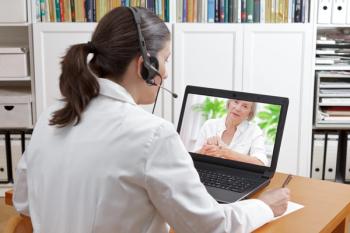
Survey Reveals Top Ways Smartphones are Improving Hospital Care
Hospitals who have deployed a smartphone-based communications platform, surveyed by Spyglass Consulting Group identified five forward-looking opportunities to expand their existing deployments.
Hospital IT smartphone investments are driving clinical transformation, according to a new study.
“Trends in Clinical Communications and Collaboration 2018,” from Spyglass Consulting Group, reveals findings of an end-user market study identifying the market opportunities and challenges for hospitals and health systems when it comes to mobile communications.
Mulkary
“Hospitals and health systems are making significant enterprise-wide investments in smartphones and secure mobile communications platforms to drive clinical transformation and address the mission- and patient-critical communications requirements of clinical and nonclinical mobile workers within the hospital and across the care continuum,” says Gregg Malkary, managing director, Spyglass Consulting Group.
Study findings were derived from more than 100 in-depth interviews with healthcare professionals working in hospital-based environments across a broad range of medical specialties, organization types, and organization sizes.
Discussions focused on work flow inefficiencies in communicating with care team members and patients, current usage models for smartphones and mobile communications solutions, and barriers for widespread mobile communications adoption.
Spyglass also evaluated key vendor product offerings and identified early adopter organizations that have successfully deployed these solutions.
Top communication challenges
Hospitals surveyed identified common communications challenges experienced by healthcare professionals that include:
- Communications overload. “Clinicians are overwhelmed by the overhead paging system, incoming voice and text communications, and a continuous stream of device alarms, which is creating alarm fatigue and leaving them little time for direct patient care,” Malkary says.
- Lack of standardized processes. Clinicians are resistant to utilizing standardized communications processes and tools especially during transitions which can introduce medical errors into care process, according to Malkary.
- Dissatisfaction with existing communications tools. “Clinicians are dissatisfied with antiquated communication options provided by hospital IT including overhead paging, landline phones, pagers, and proprietary VoIP (Voice over Internet Protocol) handsets,” he says.
“With the transition toward patient-centered care and value-based purchasing, hospitals surveyed are evaluating next-generation platforms and upgrading their technical infrastructure to help achieve the Triple Aim framework by enhancing team-based communications and collaboration, streamlining work flow processes, and improving care coordination,” Malkary says.
Mobile communication becomes top focus
Seventy-three percent of hospitals surveyed have developed or were developing strategies to address the communications, collaboration, and computing requirements of clinical professionals and other mobile workers across medical departments, standalone hospitals, and ambulatory environments.
Forty-eight percent of hospitals surveyed have identified or were identifying compelling ROI models to justify
Sixty-eight percent of hospitals surveyed are using
Hospitals surveyed who have deployed a
- Structured communications within clinical applications. Hospitals are evaluating opportunities to launch their mobile communications platforms from within various clinical applications including the EHR, lab system, pharmacy system, RIS/PACS, and physician portal. “Clinician would be able to select the type of communication, which could automatically aggregate patient demographics and clinical content based on hospital policies and procedures,” Malkary says.
- Mobile computing applications. Hospitals are evaluating opportunities to leverage existing smartphone investments to support the computing requirements of clinical and non-clinical mobile worker. For example, according to Malkary, the staff nurse would be able to leverage the smartphone for bar coding medication administration and other simple nursing documentation requirements. “IT professional could leverage the smartphone for trouble ticket management. Housekeeping professional could leverage an application for bed management,” he says.
- RTLS (real-time location services). “Hospitals are evaluating opportunities to leverage middleware solutions to integrate with their RTLS systems,” Malkary says. “This would allow hospital IT to suppress alert notifications if a caregiver is already at the patient’s bedside or redirect alert notifications to specific staff members based on their proximity the patient or the patient’s room.”
- Continuous surveillance monitoring. Hospitals are evaluating opportunities to leverage their smartphone-based communications platform to continuously monitor high-acuity patients who are considered at risk of developing specific conditions such as Sepsis, CAUTI (catheter-associated urinary tract infections), and CLABSI (central-line associated bloodstream infections), according to Malkary. “This would require real-time biomedical device integration, predictive analytics, and tight EHR integration,” he says.
- Complex clinical work flows. Hospitals are evaluating opportunities to leverage existing smartphone-based communications platforms combined with work flow process improvements to address the inherent communications inefficiencies associated patient care transitions such as when patients are admitted, discharged or transferred to other levels of care, according to Malkary.
Newsletter
Get the latest industry news, event updates, and more from Managed healthcare Executive.





















































